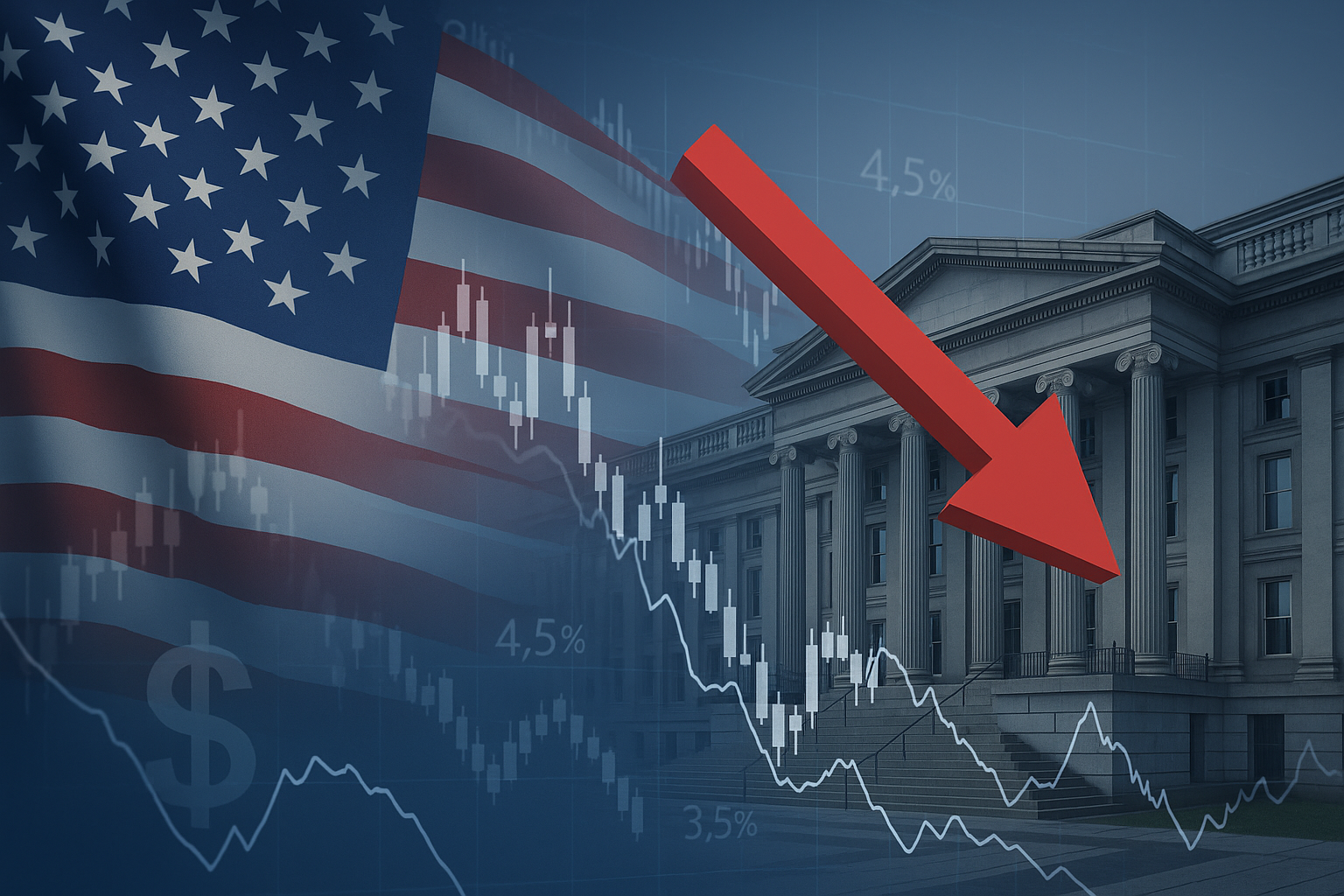U.S. Bond Yields Fall Amid Expectations of a July Rate Cut:
U.S. bond yields declined following fresh remarks by Christopher Waller,
a member of the Federal Reserve Board of Governors,
who renewed his call for an interest rate cut in July.
This coincided with data showing improved consumer inflation expectations,
While stock indexes recorded mixed performances as the earnings season kicked off.
Meanwhile, President Donald Trump signed a law regulating stablecoins
a move seen as a victory for the cryptocurrency industry.
Contents
Supporting Factors
Short-Term Bonds Lead Gains
Short-term U.S. Treasury bonds posted notable gains after Waller
signalled he was willing to dissent from the majority within the Federal Reserve
If they decided to keep rates unchanged.
This was accompanied by data from the University of Michigan,
which showed that consumer inflation expectations for the year ahead
fell to 4.4% from 5% the previous month.
Meanwhile, the S&P 500 remained largely unchanged,
while the U.S. dollar slipped slightly but ended the week with gains.
Notable Improvement in Inflation Expectations
Jeff Roach from LPL Financial commented:
“There are positive signs warranting optimism,
with improved inflation expectations that support the market’s outlook.”
Waller clarified that he saw no signs of worsening inflation expectations,
giving the Federal Reserve room to move toward a rate cut.
He emphasised the need to make such a move during the upcoming monetary policy meeting,
pointing to signs of weakening in the U.S. labour market.
Rate Cut Still Unlikely
At the same time, most investors still do not expect a rate cut during the July 30 meeting.
Current expectations indicate a total reduction of around 45 basis points by year-end,
down from over 65 basis points earlier in the month.
Andrew Brenner from NatAlliance Securities said Waller was
“right in his forward-looking perspective,”
explaining that the Fed’s role is to anticipate future trends,
Not focus on historical data.
Nevertheless, he does not expect a rate cut to happen this month.
Consumer Confidence and Spending Recovery
U.S. consumer confidence reached a five-month high at the beginning of July,
hitting 61.8 points compared to 60.7 in the previous month,
According to the University of Michigan data.
This was supported by a recent report showing a broad recovery
In retail sales during June, easing concerns over a slowdown in consumer spending.
Market Outlook and Investor Sentiment
Mark Hackett from Nationwide noted that macroeconomic fundamentals continue to support markets, saying:
“Investor sentiment has been positive despite news volatility,
Driven by strong indicators and earnings that reflect resilient consumer spending.”
Chris Senyek of Wolfe Research observed that economic data released
This week outperformed prevailing expectations,
but he warned of persistent risks related to high inflation levels continuing into the second half of 2025.
A Federal Reserve official affirmed that the U.S. economy remains resilient,
though she urged patience during this sensitive period.
Tariffs and Trump’s Trade Agenda
In a related development, Trump is preparing to impose new sector-specific tariffs
Within the next two weeks, as part of his efforts
to reshape the United States’ role in the global trade system.
His administration is pushing to include tariffs of no less than 15–20%
In any prospective trade deal with the European Union, according to the Financial Times.
Meanwhile, Japanese Prime Minister Shigeru Ishiba and U.S. Treasury Secretary Scott Besant
expressed optimism about reaching a “good” agreement between the two countries,
though they acknowledged that the process could take more time.
Supporting Factors for the Markets
Louis Navellier, Chief Investment Officer at Navellier & Associates, concluded:
“The absence of clear damage from tariffs, combined with strong earnings,
a resilient labour market, and continued consumer spending
all support elevated market valuations.”
U.S. Bond Yields Fall Amid Expectations of a July Rate Cut
* Image from CHATGBT

